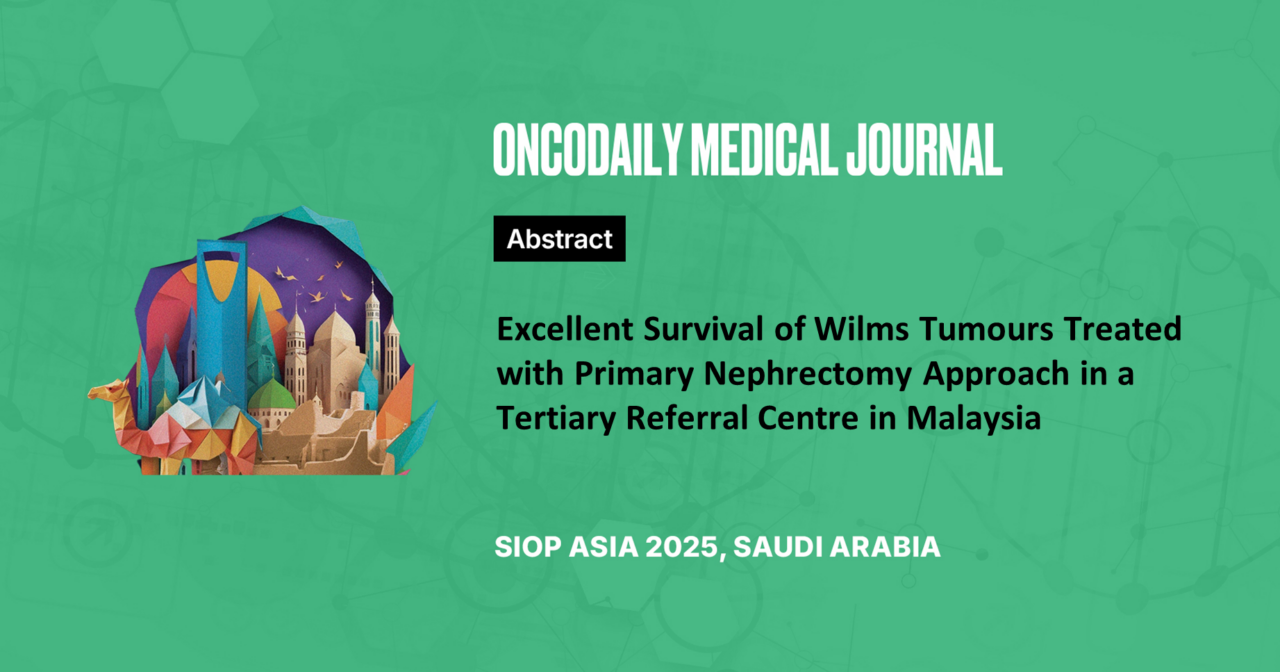Excellent Survival of Wilms Tumours Treated with Primary Nephrectomy Approach in a Tertiary Referral Centre in Malaysia
Abstract
Introduction: Survival outcome of children with Wilms Tumour (WT) in Malaysia is unknown.
Methodology: We retrospectively reviewed children with WT diagnosed between January 2014 and December 2023 in Hospital Kuala Lumpur/Hospital Tunku Azizah.
Results: There were 74 renal tumours (57 WT, 8 clear cell sarcoma, 2 congenital mesoblastic nephroma, 2 renal cell carcinoma, 2 extraskeletal Ewing sarcoma, 1 malignant rhabdoid tumour, 1 anaplastic sarcoma, 1 metanephric adenoma). 51 WT were treated with a modified COG regime. 6 were excluded (2 non-COG regime, 4 transferred elsewhere).
There were 26 boys and 25 girls. Median age was 2.5 years. 8 patients were syndromic (4 WAGR). 34 (67%) had primary nephrectomy with 6 tumour spillages (4 major, 2 localised). All had favourable histology (FHWT) except 1 with focal anaplasia (FAWT). 16 (33%) had delayed nephrectomy (6 bilateral WT, 4 spontaneous rupture, 4 IVC thrombosis, 1 horseshoe kidney, 1 pelvic kidney). None had tumour spillage. All had intermediate histology. 24 (47%) had radiotherapy (12 flank, 10 whole abdomen [WAI], 1 whole lung [WLI], 1 both WAI and WLI).
Median time from nephrectomy to radiotherapy was 48 days. 1 stage I FHWT with multiple congenital anomalies had nephrectomy only. 8 stage I & 8 stage II FHWT were treated with EE-4A. 1 stage I FAWT and 18 stage III FHWT were treated with DD-4A. 6 stage IV FHWT were treated with DD-4A as lung metastases disappeared by week 6, 3 switched to Regimen M due to persistent metastases. All stage V were started on VAD regime; 5 continued on DD-4A and 1 on EE-4A after nephron sparing surgery. 4 patients died (acute pulmonary embolism, second malignant neoplasm, viral pneumonia and abdominal relapse). Five year overall survival was 91.2%.
Conclusion: Excellent survival was achieved with a primary nephrectomy approach.





